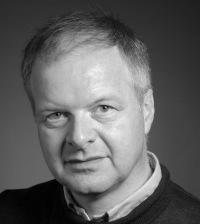
Robert Jan Van Pelt
[back] Holocaust
revisionism
Historians
[Robert Jan van Pelt (born August 15, 1955 in
Haarlem, Netherlands) is an author, architectural historian, Professor at the
University of Waterloo in Ontario and a Holocaust scholar. One of the world's
leading experts on Auschwitz, he regularly speaks on Holocaust related topics.
He successfully helped defend Deborah Lipstadt in the civil libel suit brought
against her by David Irving.]
[2010 Book] Auschwitz—The Case for Sanity by Carlo
Mattogno
Auschwitz: the Case for Sanity is the revisionist response to
Robert van Pelt. Its first revelation is that van Pelt has committed plagiarism:
he plundered and basically regurgitated the research results published in 1989
and 1993 by French researcher Jean-Claude Pressac – yet without naming his
source even once. On more than 700 pages, Mattogno thoroughly scrutinizes van
Pelt’s contorted assertions by juxtaposing them to material and documentary
facts.
Mattogno’s analysis is devastating
for van Pelt, as it reveals that van Pelt’s study of Auschwitz ignores crucial
counter-arguments, fails to approach pivotal technical issues with technical
means, is highly inconsistent, uses deceptive methods, presents conflicting
sources without due source criticism, deforms all sources to serve the author’s
perspective, and reveals a shockingly threadbare knowledge of the history of
Auschwitz.
[2000] Critique of Claims Made by Robert Jan Van Pelt by Germar Rudolf
Germar Rudolph critique of the Judgement of Justice Gray
http://www.fpp.co.uk/Auschwitz/Pelt/index.html
Book
[2002] The Case for Auschwitz
[1996] Auschwitz / 1270 to the Present
Quotes by Van Pelt
“The evidence for the role of Treblinka, Belzec, and
Sobibor—sufficient as it may be to come to a moral certainty about the wartime
history of those places—is much less abundant. There are few eyewitnesses, no
confession that can compare to that given by [Commandant of Auschwitz Rudolf]
Hoss, no significant remains, and few archival sources.”
[2002] The Case for Auschwitz
p.5
Quotes
[2001]
Convergence or Divergence?: On Recent Evidence for Zyklon Induction Holes at
Auschwitz-Birkenau Crematory II by Brian Renk
If Zyklon holes in the roof of Leichenkeller 1 had been there, as described
by the most important witnesses within months after the capture of Auschwitz,
indisputable evidence of their existence would still be discernible there today.
But there is none, and the efforts of the most qualified exterminationist expert
and the most diligent exterminationist amateur to account for the absence of
that evidence, and of any contemporaneous evidence other than statements from a
Soviet show trial and its successors, has produced nothing but a tragicomedy for
the Holocaust industry. In fact, there were no Zyklon holes at Crematorium II of
Auschwitz-Birkenau, and the absence of those humble openings leaves the
Auschwitz myth as blasted as the concrete, and as contorted as this rebar, in
the ruins of the morgue there today.
I don't claim to have solved all problems connected with the formation and detectability of Iron Blue in the so-called 'gas chambers' of Auschwitz, Birkenau or elsewhere, nor do I claim of having understood the meaning of every document concerning the concentration camp Auschwitz and Birkenau. But I do know that referring to or relying on Jean-Claude Pressac's flawed works[see critique in note, as Prof. van Pelt does, and on the paper published by the Polish authors discussed here either proves his ignorance of the current state of the discussion or of a deliberate attempt of deception. This Polish paper he heavily relies on has been definitely proved to be a scientific fraud no longer worth being mentioned. It is especially not suited to refute the Leuchter Report, not to talk about my own report. Prof. van Pelt should get better advice in architectural and chemical questions. [2000] Critique of Claims Made by Robert Jan Van Pelt by Germar Rudolf